Pikes Peak Is the Last Great Race for Innovation
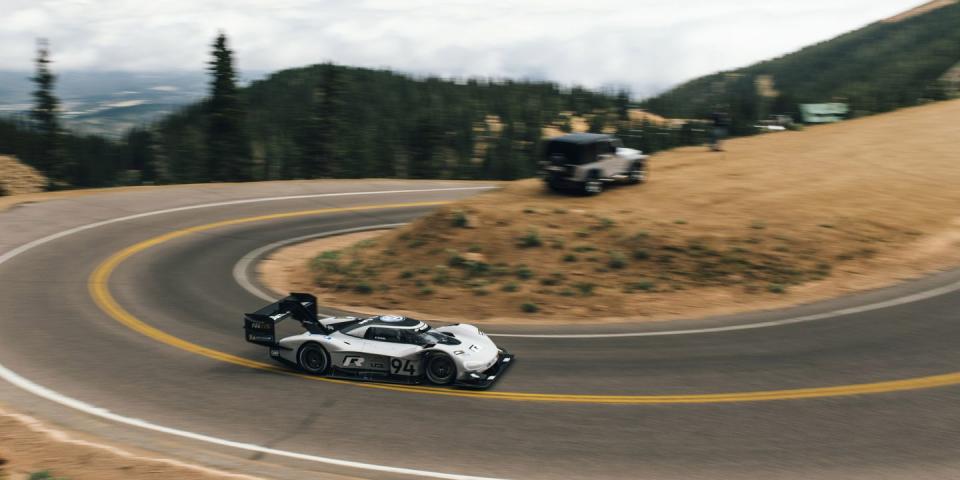
The tagline for the Pikes Peak International Hill Climb is ‘The Mountain Decides,’ which, frankly, seems like overdramatized marketing fluff. From a hotel in Colorado Springs, the organizers warn media attendees about exposure, altitude, storms, and freezing temps. “Yeah, yeah,” you think. Drink plenty of water and bring layers. Then, on Sunday, the 96th running of the Pikes Peak International Hill Climb was cut short by a hailstorm. The mountain had decided.
I arrived mid-week to catch a few practice days, and the race on Sunday. Race week on Pikes Peak consists of practice sessions held Tuesday through Friday, with the main hillclimb event happening all-day Sunday. The practice sessions must accommodate Pikes Peak’s daily tourist hours, so competitors are only allowed on the course from 5:30-8:30AM on the weekdays. The racers are split into classes, and each class focuses on one section of the mountain per day. They make a run, wait at the top of the segment for the rest of the run group, and then head back down to repeat the 3-4 mile section again. If the weather cooperates and there are no incidents, everyone in the session may get as many as five runs on the section. The only chance the drivers have to complete the full 12.42-mile course at speed is on race day, and they only have one shot.
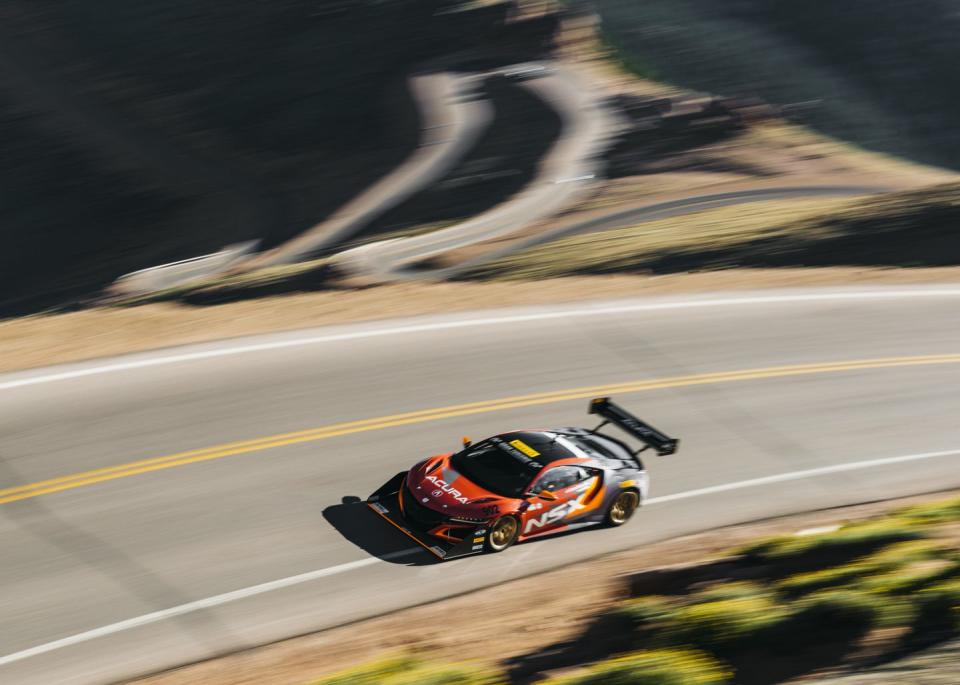
By now you’ve read about the Volkswagen I.D. R electric prototype, but just to recap: VW built a 680-hp EV racecar specifically for tackling Pikes Peak. The company line was that they were aiming only for the Electric Vehicle record - 8:57.118, set by Rhys Millen in 2016. But speculation was rampant that the overall Pikes Peak record, an 8:13.878 set by Sébastien Loeb in a Peugeot 208 T16 in 2013, was in their sights. An electric car makes just as much power at the summit as it does at sea level, which gives it a huge advantage over a a gas-powered car, which faces a 50% power loss in the thin air. The investment by Volkswagen generated a massive buzz, and you could sense how excited everyone was to witness history.
For the practice days, I photographed and experienced the event from a few corners centered around Devil’s Playground and Elk Park. Both areas are above the tree line, meaning, an elevation too high for trees to grow. The lack of vegetation gives you unobstructed views, and you can even look down the steep course to other corners hundreds of feet below you. I thought it would be possible to move between corners, but it’s not as easy as it might seem: the terrain is steep and slippery, with loose rock and dirt everywhere. I imagined there might be some trails, but really the only habitable path is the roadway, which becomes an active race course at 5:30 AM.
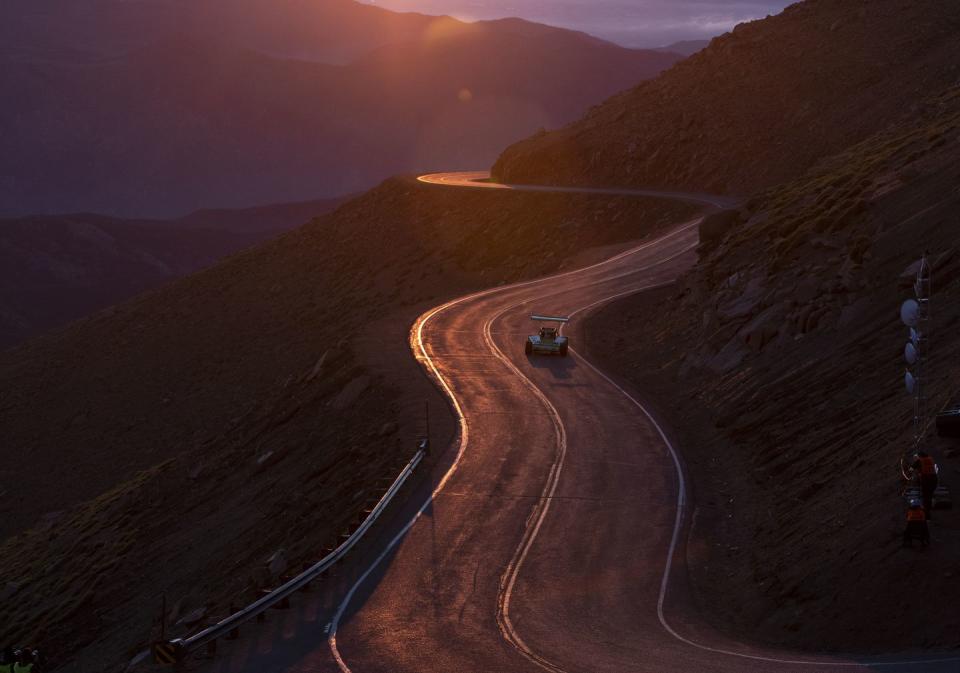
The race cars arrive, one-by-one up the hill, before sunrise, when the sky is still pink and orange. One slick-tired, be-winged, unlimited-class monster after another. They thundered through the course, their open exhausts bouncing in every direction off the cliff walls.
Only a siren sound preceded the sleek grey Volkswagen I.D. R, as it lunged up the course. It slipped into view, devoured the straightway in front of it, then slowed down hard for the hairpin before seamlessly gliding away at speed. It looked fast, but not noticeably faster than the louder, internal combustion prototypes. The lack of a sound probably had a lot to do with it. You heard tires, a faint whirring, and something that sounded like gear whine. And of course, the siren, which is required to warn spectators of the otherwise-silent electric cars as they approach.
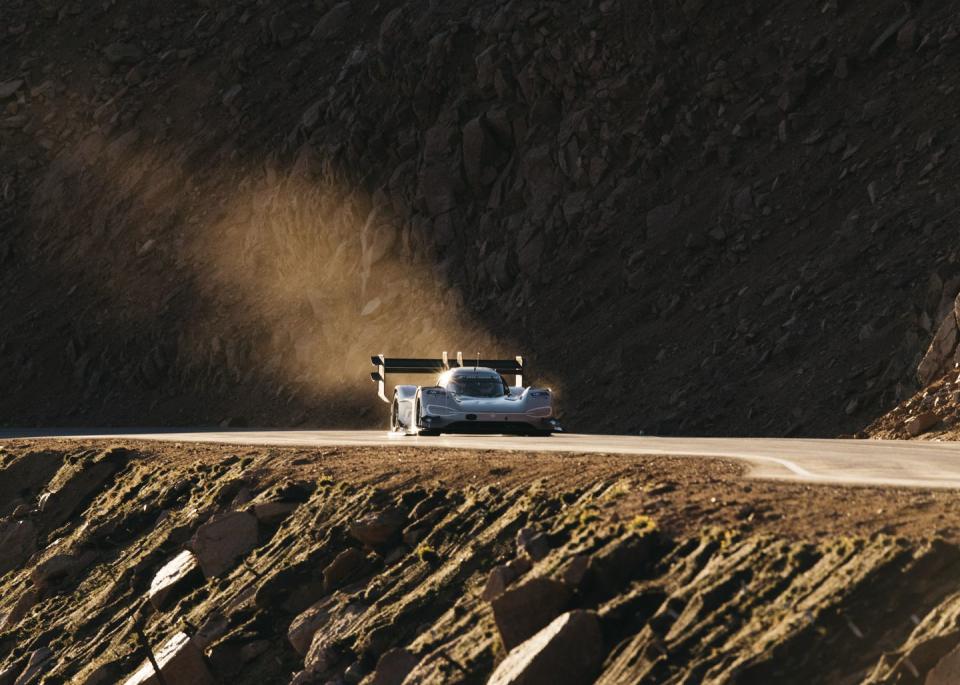
Practice days were a surreal dream. You sacrifice comfort, warmth, and sleep to be there, but the reward is seeing something unlike anything else in motorsports: a race above the clouds.
The evening before the race, I felt butterflies. Butterflies from the daunting prospect of waking up at 1:30AM to get to the mountain in time to find a space. Butterflies for the drivers who are driving a single lap under more pressure and danger than I care to contemplate. Formula 1 drivers get a hundred practice laps before qualifying, and there are 20 grands prix in a year. Pikes Peak competitors get one chance to string together a perfect single lap. And then that’s it, until next year. And that’s without even getting into the thousand-foot drop-offs bordering the course, or the risk of oxygen deprivation.
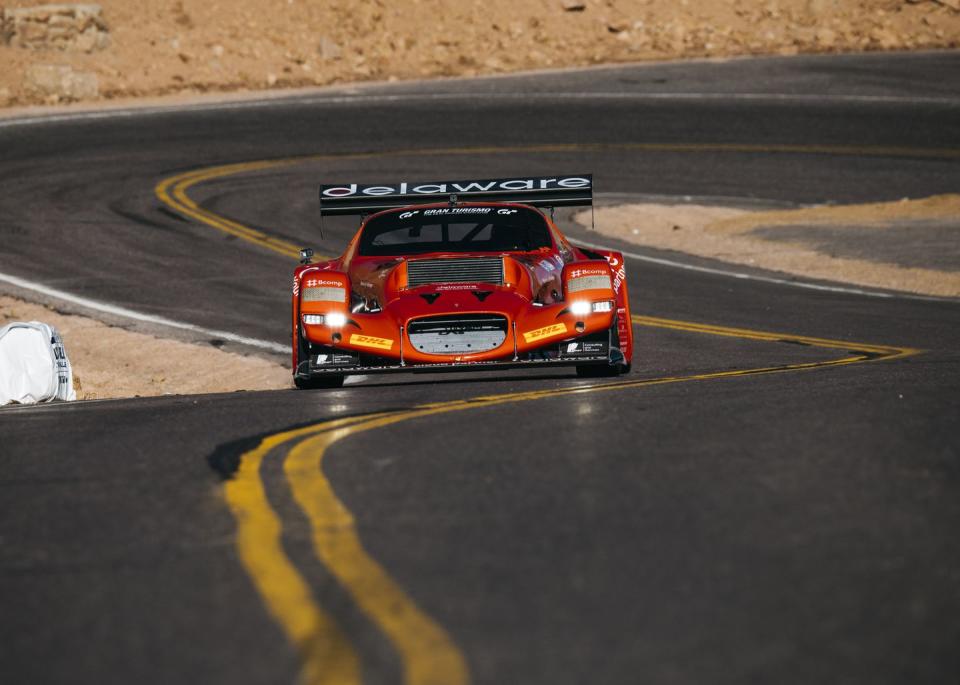
Race day has more reasonable hours - 8:00 AM until however long it takes to get through 75 cars and 25 or so motorcycles. The motorcycles went first, and when they were done, Romain Dumas, having qualified first, made his run up the mountain in the Volkswagen I.D. R.
After a week of buildup, it seemed almost anti-climactic to watch the Volkswagen I.D. R scuttle through the hairpin named George’s Corner on race day. There are no monitors, megaphones, or WiFi at the track, so without a radio, you wouldn’t know he had even left the start. Dumas appeared, and then disappeared, and a few minutes later, the news had reached us: Romain Dumas had run a 7:57.148, beating Loeb’s overall record by 16 seconds. History was made.
Pikes Peak, as an event, is the closest thing I can imagine to the nostalgic and rose-tinted ‘way racing used to be’ in the 1960s and 70s. The course is a roadway, with hay bails lining the corners. There’s an ‘Unlimited’ class where anything goes. Danger is always palpable - for both drivers and spectators. Really, it’s a good thing that most forms of motorsports have moved on - with countless advancements in safety, facilities, and online access. But I’m really glad that Pikes Peak exists, just as it is. The Pikes Peak International Hill Climb takes place only once a year, giving us just a taste of unregulated motorsports, distilled and unfettered. But any more than a taste might be too rich.
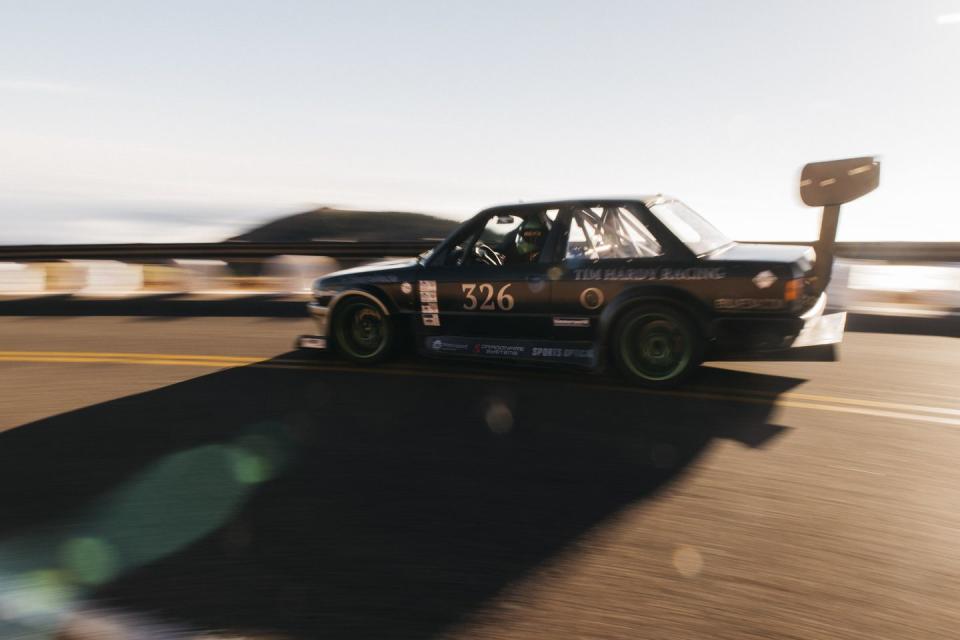
You Might Also Like

 Yahoo Autos
Yahoo Autos 